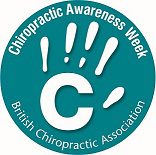As the world of sports continues to evolve, athletes are constantly seeking new ways to enhance their performance, prevent injuries, and recover faster. Among the varied healthcare professionals dedicated to supporting athletes, chiropractors play a crucial role. Below, is how chiropractic care can benefit athletes and elevate their performance on the field, court, or track.
- Enhancing Performance
Dysfunction in the joints, ligaments and muscles can hinder an athlete’s performance by causing discomfort and limiting mobility. By correcting these using different types of spinal adjustments, chiropractors can help athletes achieve better posture, improve range of motion, and enhance overall physical performance. When the spine is properly restored to its normal function, the body can operate more effectively, allowing athletes to train harder and perform better.
 Injuries are an unfortunate reality for many athletes, but chiropractors can help minimize the risk of injury. By focusing on the biomechanics of the body, chiropractors can identify areas of weakness or misalignment that might predispose an athlete to injury. Through tailored chiropractic adjustments and rehabilitation exercises, athletes can strengthen vulnerable areas and maintain balance, reducing the likelihood of injuries happening in the first place.
Injuries are an unfortunate reality for many athletes, but chiropractors can help minimize the risk of injury. By focusing on the biomechanics of the body, chiropractors can identify areas of weakness or misalignment that might predispose an athlete to injury. Through tailored chiropractic adjustments and rehabilitation exercises, athletes can strengthen vulnerable areas and maintain balance, reducing the likelihood of injuries happening in the first place.
- Faster Recovery
When injuries do occur, a chiropractor can play a pivotal role in the recovery process. Chiropractic care not only alleviates pain but through the treatment and advice chiropractors can help promote healing by improving circulation and reducing inflammation. Techniques such as soft tissue therapy and rehabilitation exercises can enhance the recovery timeline, allowing athletes to return to their sport faster and stronger than before.
- Stress Relief and Mental Focus
Athletic performance isn’t just about physical prowess; mental clarity and focus are equally important. Regular chiropractic adjustments can help release tension, promote relaxation, and improve overall well-being. With the stressors athletes face, be it competition pressure or rigorous training schedules, this mental boost can lead to improved concentration, enabling athletes to perform at their best.
- Personalized Care Plans
Every athlete has unique needs, and chiropractors are trained to develop personalized care plans that cater specifically to an athlete’s goals and challenges. Whether you’re a weekend warrior or a professional athlete, your chiropractor will conduct a thorough assessment, considering your sport, training regimen, and historical injuries. This kind of approach ensures that you receive the most effective care tailored to your specific situation, keeping you in top shape.
- Collaboration with Other Healthcare Providers
Chiropractors often work in collaboration with other healthcare professionals; including physiotherapists, massage therapists, and nutritionists. This multidisciplinary approach to athletic care ensures that athletes receive the comprehensive support they need. Whether it’s injury management, nutrition advice, or performance enhancement, a chiropractor can be a central piece in the athlete’s healthcare puzzle.
Final Thoughts
Athletes, whether amateur or professional, face unique challenges that require specialized care. Chiropractic care is an invaluable tool in enhancing performance, preventing injuries, and ensuring a speedy recovery. With a focus on spinal alignment, injury prevention, personalized care, and holistic wellness, chiropractors are uniquely qualified to help all athletes unlock their full potential.








